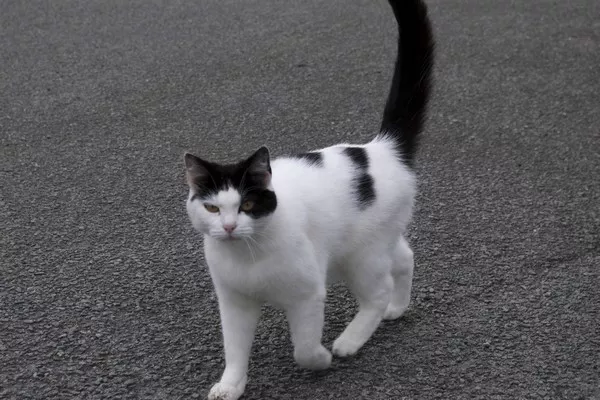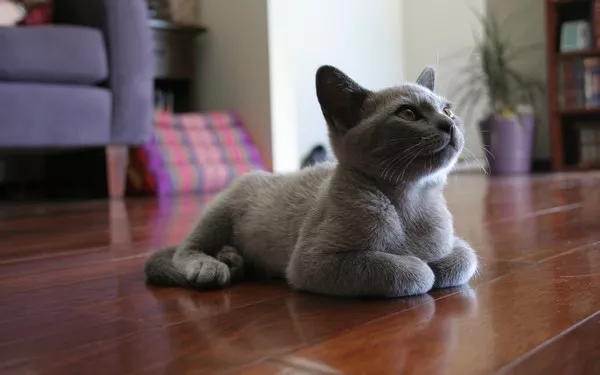Havana Brown cats are a unique and captivating breed known for their striking chocolate-brown coats, vibrant green eyes, and affectionate personalities. As with any pet, prospective owners often wonder about the lifespan of their furry companions. Understanding how long Havana Brown cats typically live involves more than just a number; it encompasses a variety of factors, including genetics, health care, diet, and lifestyle. This essay will explore the average lifespan of Havana Brown cats, the factors that influence their longevity, and the best practices for ensuring a long, healthy life for these beloved pets.
Average Lifespan of Havana Brown Cats
General Lifespan Range
The average lifespan of a Havana Brown cat typically ranges from 12 to 15 years. However, with proper care, some individuals may live even longer, reaching into their late teens or early twenties. This lifespan is comparable to that of many other domestic cat breeds, reflecting the breed’s overall health and resilience.
Factors Influencing Lifespan
While the average lifespan provides a general guideline, several factors can influence how long a Havana Brown cat lives. These include genetics, health care, diet, lifestyle, and environmental conditions.
Genetics and Breed Characteristics
Genetic Background of Havana Brown Cats
Havana Brown cats were developed in the 1950s through selective breeding, primarily involving Siamese cats and domestic black cats. This breeding aimed to create a breed with a unique chocolate-brown coat and a friendly, affectionate temperament. The genetic makeup of Havana Browns contributes to their overall health and longevity.
Inherited Health Issues
Like all breeds, Havana Brown cats may be predisposed to certain genetic health issues. While they are generally considered a healthy breed, potential health concerns can include:
Respiratory Issues: Due to their brachycephalic facial structure, some Havana Browns may experience respiratory difficulties, particularly if they are overweight.
Dental Problems: Dental health is crucial for all cats, and Havana Browns can be prone to dental issues if not properly cared for.
Obesity: Like many indoor cats, Havana Browns can become obese if their diet and exercise needs are not adequately met. Obesity can lead to various health problems, including diabetes and joint issues.
Hypertrophic Cardiomyopathy (HCM): This is a common heart condition in cats, characterized by the thickening of the heart muscle. While it can affect any breed, certain breeds, including the Havana Brown, may have a higher risk.
Importance of Responsible Breeding
Responsible breeding practices can help minimize the risk of inherited health issues. Reputable breeders perform health screenings and genetic testing to ensure that their breeding cats are free from hereditary conditions. This practice contributes to the overall health and longevity of the breed.
Health Care and Preventative Measures
Regular Veterinary Check-ups
Routine veterinary care is essential for maintaining the health of any cat, including Havana Browns. Regular check-ups allow for early detection of health issues, vaccinations, and preventative care. Key components of veterinary care include:
Annual Health Exams: Regular examinations help monitor the cat’s overall health and catch any potential problems early.
Vaccinations: Keeping vaccinations up to date protects against common feline diseases, such as feline leukemia and rabies.
Parasite Control: Regular treatments for fleas, ticks, and worms are crucial for preventing infestations and related health issues.
Dental Care: Regular dental check-ups and cleanings can help prevent dental disease, which is common in cats and can affect their overall health.
Nutrition and Diet
A balanced diet is critical for the health and longevity of Havana Brown cats. Key dietary considerations include:
High-Quality Cat Food: Feeding a balanced diet that meets the nutritional needs of the cat is essential. High-quality commercial cat food, whether dry or wet, should be chosen based on the cat’s age, weight, and health status.
Portion Control: Monitoring portion sizes is crucial to prevent obesity. Overfeeding can lead to weight gain, which is associated with various health problems.
Hydration: Ensuring that the cat has access to fresh water at all times is vital for maintaining hydration and overall health.
Special Dietary Needs: Some Havana Browns may have specific dietary requirements based on their health status. Consulting with a veterinarian can help determine the best diet for an individual cat.
Exercise and Activity
Regular exercise is essential for maintaining a healthy weight and overall well-being in Havana Brown cats. Engaging in physical activity helps prevent obesity and promotes mental stimulation. Key components of exercise include:
Interactive Play: Engaging in playtime with toys, such as feather wands or laser pointers, can provide physical exercise and mental stimulation.
Climbing Structures: Providing cat trees or shelves allows Havana Browns to climb and explore, promoting natural behaviors.
Social Interaction: Regular interaction with humans and other pets encourages physical activity and socialization, which are important for a cat’s mental health.
Lifestyle Factors
Indoor vs. Outdoor Living
The living environment of a Havana Brown cat can significantly impact its lifespan. Indoor cats generally live longer than outdoor cats due to reduced exposure to dangers such as traffic, predators, and infectious diseases.
Indoor Living: Keeping a Havana Brown indoors protects it from various hazards and allows for controlled environments where health can be monitored more closely.
Outdoor Access: If owners choose to allow outdoor access, it is essential to supervise the cat and provide a safe, enclosed area to minimize risks.
Environmental Enrichment
Creating a stimulating environment is crucial for the mental and physical well-being of Havana Brown cats. Environmental enrichment can include:
Toys: Providing a variety of toys encourages play and exploration, keeping the cat mentally engaged.
Scratching Posts: Cats have a natural instinct to scratch, and providing scratching posts helps satisfy this behavior and keeps their claws healthy.
Hideaways and Perches: Offering cozy hideaways and elevated perches allows cats to explore their environment and find safe spaces to retreat.
Socialization and Companionship
Havana Brown cats are known for their affectionate nature and sociability. Ensuring that they have regular interaction with their human companions and, if possible, other pets can contribute to their emotional well-being.
Bonding Time: Spending quality time with a Havana Brown, whether through play, grooming, or simply sitting together, strengthens the bond and promotes happiness.
Multi-Pet Households: If introducing another pet, it is crucial to ensure proper introductions and monitor interactions to foster positive relationships.
Aging and Senior Care
As Havana Brown cats age, their care needs may change. Understanding the aging process and adjusting care accordingly is essential for maintaining the health and comfort of senior cats.
Signs of Aging
Common signs of aging in cats can include:
Decreased Activity: Older cats may become less active and prefer to rest more.
Changes in Appetite: Changes in eating habits, whether increased or decreased, can indicate health issues.
Weight Changes: Weight loss or gain can be a sign of underlying health problems.
Behavioral Changes: Changes in behavior, such as increased vocalization or changes in litter box habits, can indicate discomfort or health concerns.
Senior Cat Care
Caring for an aging Havana Brown may involve:
Regular Veterinary Visits: Senior cats should have more frequent check-ups to monitor for age-related health issues.
Dietary Adjustments: Older cats may require specialized diets to address health concerns or weight management.
Comfortable Living Environment: Providing a comfortable and accessible living space is crucial for senior cats. This may include soft bedding and easy access to food and litter boxes.
Pain Management: If a senior cat develops arthritis or other age-related conditions, discussing pain management options with a veterinarian is essential.
Conclusion
In conclusion, the lifespan of Havana Brown cats typically ranges from 12 to 15 years, influenced by a combination of genetic factors, health care, diet, lifestyle, and environmental conditions. By understanding the unique characteristics of this breed and providing proper care, owners can help ensure their Havana Brown cats live long, healthy, and fulfilling lives.
Regular veterinary care, a balanced diet, and an enriched environment are key components of promoting longevity in Havana Brown cats. Additionally, being attentive to the needs of senior cats and making necessary adjustments to their care can enhance their quality of life as they age.
Ultimately, the bond between a Havana Brown cat and its owner is a rewarding experience, and with the right care, these enchanting felines can bring joy and companionship for many years. By prioritizing their health and well-being, owners can enjoy the delightful presence of their Havana Brown cats throughout their lives.
Related topic:



























